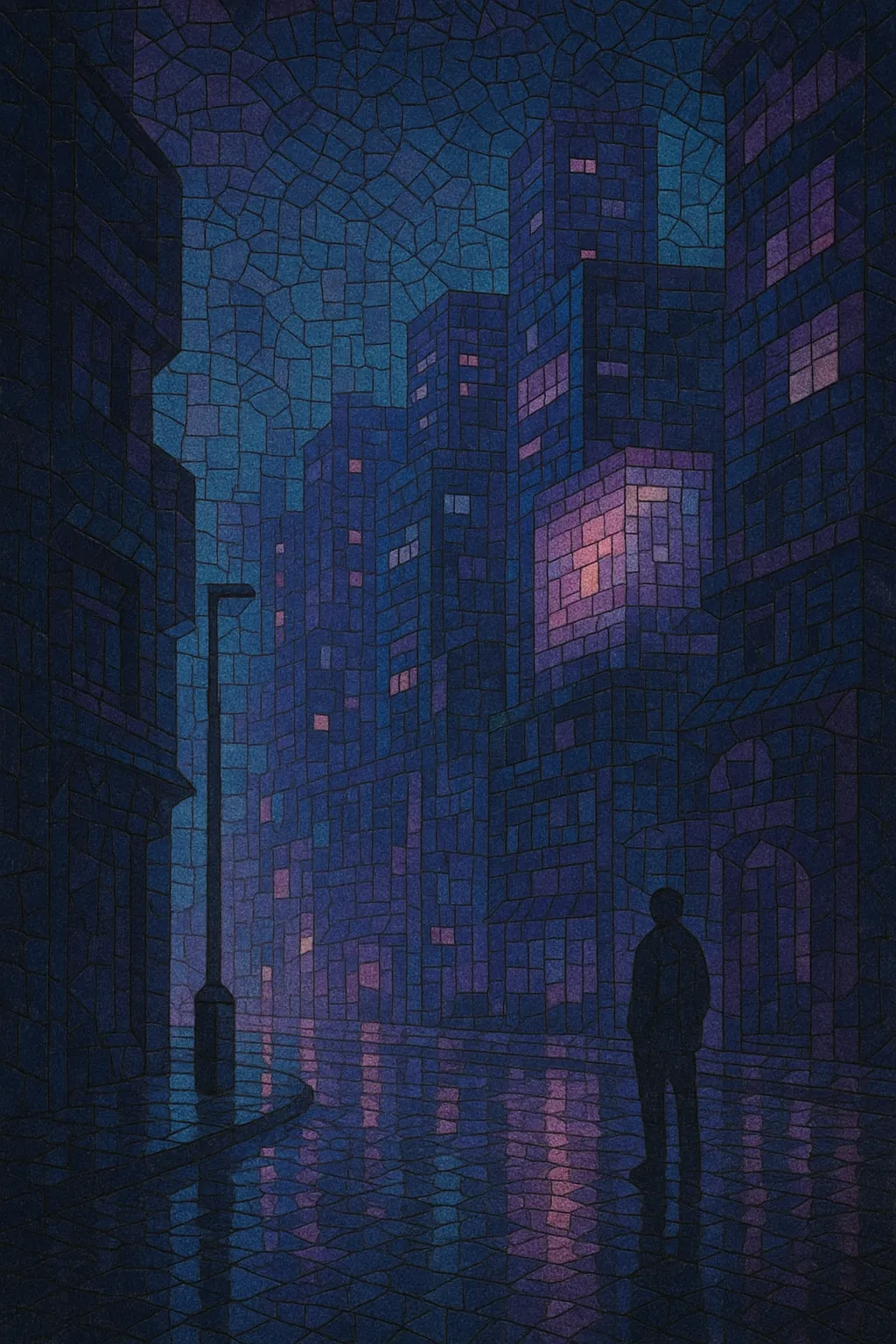
Dreampunk is a vaporwave-adjacent strain of ambient music that evokes rain-slicked, neon-lit cityscapes and late-night solitude. It favors widescreen pads, lingering reverb, and soft-focus textures that feel cinematic yet intimate, as if overheard from an apartment window above an endless metropolis.
The style often incorporates field recordings—rain, traffic, station announcements—alongside subdued downtempo rhythms or entirely beatless passages. Harmonies tend to be lush but restrained, leaning on suspended tones and minor 7th colorings that drift rather than resolve. The result is a dreamlike, nocturnal mood that sits between ambient, vaporwave, and cyberpunk film score aesthetics.
Dreampunk crystallized in the mid‑2010s around the UK-based label Dream Catalogue (founded by HKE). While rooted in the internet-born vaporwave ecosystem, it pursued a more cinematic and emotionally earnest direction: longer forms, immersive sound design, and urban field recordings. The 2015 album “Birth of a New Day (新しい日の誕生)” by 2814 (the duo of HKE and t e l e p a t h テレパシー能力者) became the touchstone release, defining the genre’s rainy, neon-lit nocturne.
Beyond Dream Catalogue, labels such as No Problema Tapes, BLCR Laboratories, and related cassette imprints helped codify and circulate the sound globally. The scene flourished on Bandcamp and cassette culture, with international contributors trading aesthetics of cyberpunk melancholy, Blade Runner–style synth atmospheres, and vaporwave’s sampling sensibilities—often with less overt plunderphonics and more original ambient composition.
Around 2016, a reactionary pivot toward harder, industrial-adjacent textures birthed “hardvapour,” but the dreampunk current continued, deepening ties to drone, dark ambient, and ambient techno. Artists like Kagami Smile and Sangam folded shoegaze-like haze and dubwise space into the palette, while others emphasized beatless, long-form immersion. Through the late 2010s and into the 2020s, dreampunk influenced adjacent microgenres (e.g., slushwave and utopian virtual), while remaining a living, internet-native ambient tradition.
Today, dreampunk is recognized as one of vaporwave’s most enduring post-styles: less satirical than its parent, more cinematic and contemplative. It provided a blueprint for contemporary ambient producers to blend urban field recordings, spectral pads, and restrained rhythm into evocative, narrative soundscapes.
Start with wide, slowly evolving pads (analog-modelled or FM/wavetable) fed into generous reverb and tempo-synced delays. Layer gentle noise beds and field recordings—rain, traffic hum, station ambience—to create a lived-in urban space.
Use modal or minor tonalities (Aeolian, Dorian), with suspended chords, add9s, and 7ths to keep motion afloat. Favor sustained voicings, gentle filter movement, and slow attack/release envelopes. Subtle detune/chorus and tape or cassette saturation reinforce the hazy, nocturnal character.
Many tracks are beatless; if using drums, keep them sparse and soft, 60–100 BPM, with muted kicks, brushed snares, and subdued hats. Light sidechain breathing against pads can evoke distant club energy without breaking the dream-state.
Compose in long arcs (5–12 minutes). Introduce scenes via field recordings, let pads and motifs evolve through filtering and layer swaps, and avoid sudden drops. Think in cinematic terms: a night walk, a passing train, a skyline reveal.
When sampling, favor subtle fragments (city pop, new age, film score textures) transformed with time-stretching, granular smearing, or spectral processing. Keep recognizable content minimal; the atmosphere should feel original and immersive.
Prioritize depth and stereo width. Use high-pass filtering to keep the low end clean, carve space with EQ, and let reverbs bloom without mud (pre-delay and gentle ducking help). Aim for moderate loudness to preserve dynamics and air.

